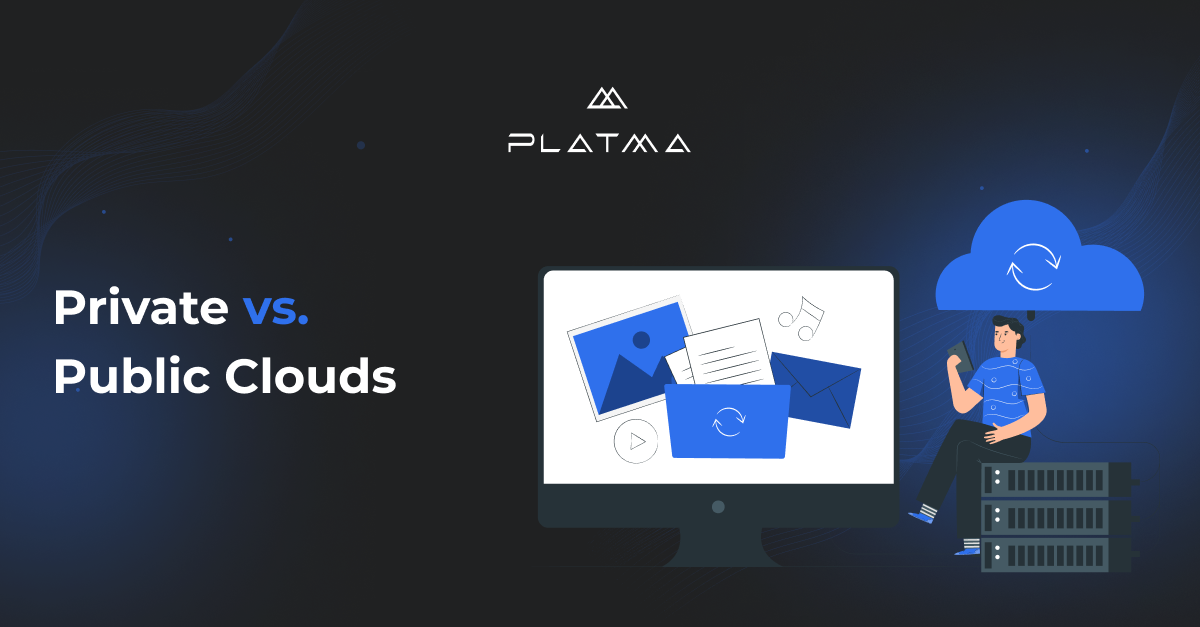Greetings from Platma! In today’s blog post, we will dive into the topic of private and public clouds and help you understand the key differences between these two cloud deployment models. As a low-code platform provider, we understand the importance of selecting the right cloud strategy for your business needs. So, let’s explore the private vs. public cloud debate and see which option might be the best fit for you.
Understanding Private Clouds:
Private clouds are dedicated infrastructures that are solely used by a single organization. These clouds can be hosted on-premises or in a third-party data center, offering enhanced control and security compared to public clouds. Here are some key characteristics of private clouds:
a. Control: Private clouds provide organizations with full control over their infrastructure, allowing them to customize and configure resources according to their specific requirements. This level of control enables businesses to optimize performance and tailor their cloud environment to their unique needs.
b. Security: Private clouds offer enhanced security measures, ensuring that sensitive data and applications are protected. With a private cloud, you have greater control over security policies, access controls, and compliance requirements, making it an ideal choice for organizations dealing with strict data privacy regulations.
c. Cost: Private clouds typically involve higher upfront costs due to the need for infrastructure setup and maintenance. However, they can offer cost savings in the long run for businesses with predictable workloads or specific security and compliance needs.
Exploring Public Clouds:
Public clouds, on the other hand, are shared infrastructures that are accessible to multiple organizations over the internet. These clouds are managed and maintained by cloud service providers (CSPs) such as Amazon Web Services (AWS), Microsoft Azure, or Google Cloud Platform. Let’s delve into the key characteristics of public clouds:
a. Scalability: Public clouds provide virtually unlimited scalability, allowing businesses to scale up or down resources based on demand. This elasticity is particularly beneficial for organizations with fluctuating workloads or those looking to rapidly expand their infrastructure.
b. Cost: Public clouds follow a pay-as-you-go model, where you only pay for the resources you consume. This eliminates the need for upfront investments in infrastructure, making it a cost-effective option for businesses with unpredictable workloads or limited budgets.
c. Reliability: Public cloud providers offer robust infrastructure with built-in redundancy and high availability. They have multiple data centers across different geographic regions, ensuring that your applications and data remain accessible even in the event of hardware failures or natural disasters.
Choosing the Right Cloud Strategy:
When it comes to selecting between private and public clouds, there is no one-size-fits-all solution. The decision depends on various factors specific to your organization’s needs, including:
a. Security and Compliance: If your business deals with sensitive data or operates in industries with strict compliance requirements, a private cloud might be the better option due to its enhanced security controls and customization capabilities.
b. Scalability and Flexibility: If your workload is dynamic and requires frequent scalability, or if you are a growing organization that anticipates rapid expansion, a public cloud offers the agility and scalability you need to meet changing demands.
c. Cost Considerations: Consider your budget, upfront investment capabilities, and long-term cost projections. While private clouds may require higher upfront costs, they can offer cost savings in certain scenarios, such as predictable workloads or specific compliance needs.
d. Hybrid Cloud Approach: Some organizations adopt a hybrid cloud strategy, which combines the benefits of both private and public clouds. This approach allows businesses to leverage the security and control of a private cloud for critical applications while utilizing the scalability and cost-efficiency of public clouds for less sensitive workloads.
In conclusion, the decision to opt for a private or public cloud depends on your organization’s specific requirements, including security, scalability, and cost considerations. At Platma, we recognize the importance of choosing the right cloud strategy for your low-code applications. We provide seamless integration with both private and public cloud environments, enabling you to leverage the power of our low-code platform while aligning with your preferred cloud deployment model.
We hope this article has provided valuable insights into the private vs. public cloud debate. If you have any further questions or need assistance in determining the best cloud strategy for your business, feel free to reach out to our team at Platma. Happy cloud computing!






